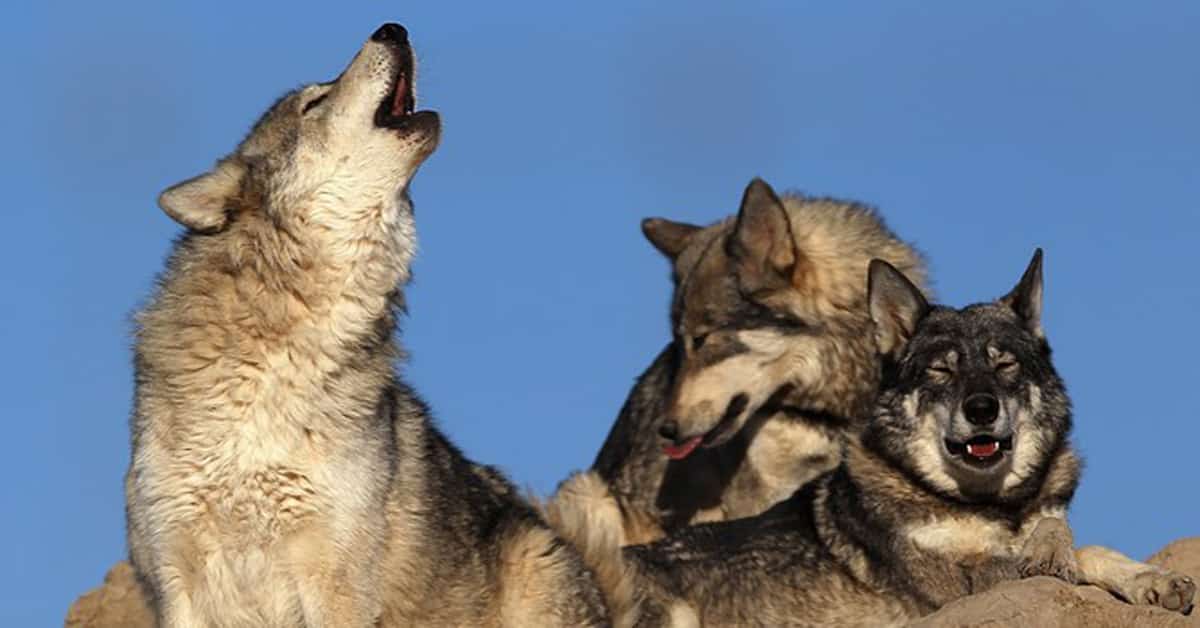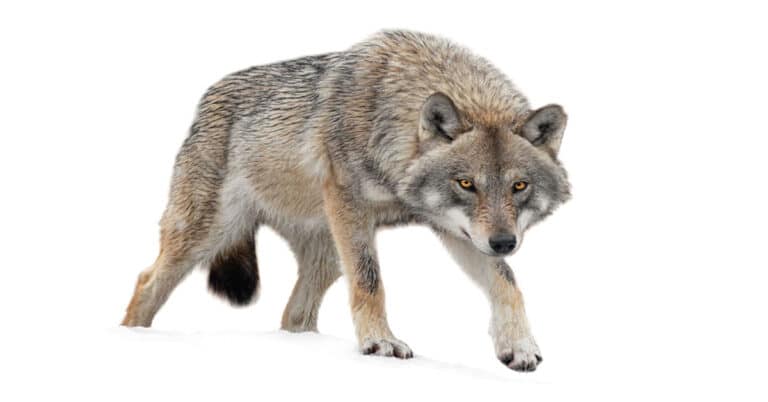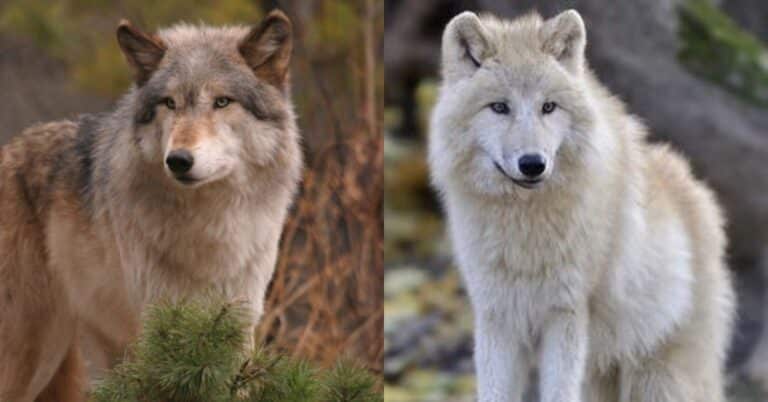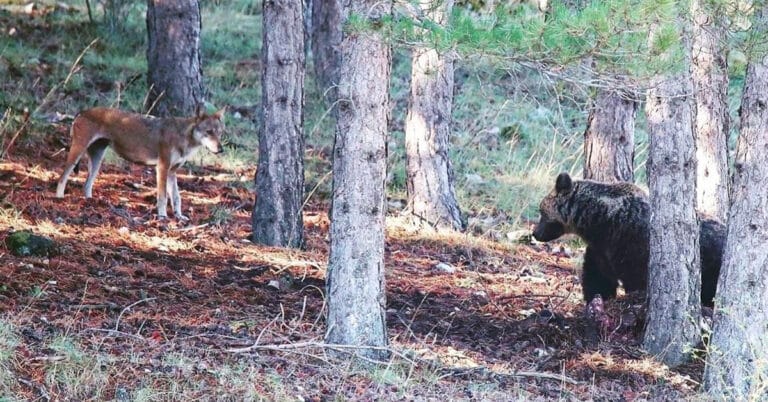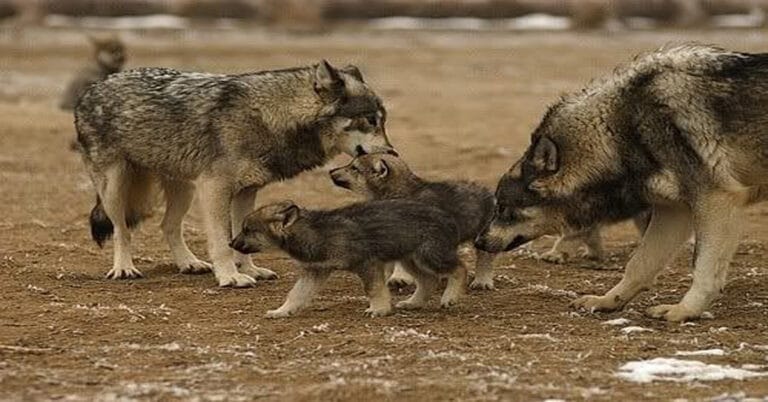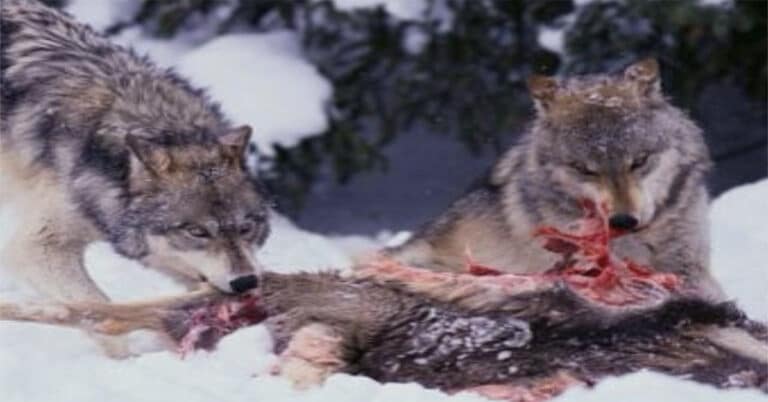Why Do Wolves Howl?
Wolves are fascinating creatures, and if you have ever heard them howling, you will agree that their sound is pretty scary. They have some incredible sounds, and hearing them can be a very unique experience. It just creates a feeling of being in the wild and being part of nature. However, have you ever wondered why do wolves howl?
In this article, we will learn more about wolves, how they communicate, and why do wolves howl. So let’s start exploring.
Biology Of Wolves
Before exploring why do wolves howl, let’s start by learning about their biological characteristics. Wolves are large canines endemic to North America and Eurasia. There are more than thirty different subspecies of wolves. The wolf is the Canidae family’s biggest living member. In comparison to other canids, wolves have longer tails and less pointed noses and ears.
When hunting, wolves roam their area, frequently returning to the same locations. Wolves locate their previous pathways and continue to use them after snowfalls. These go along the banks of rivers, the edges of lakes, shrub-covered ravines, plantations, or roads and footpaths.
Wolves hunt at night too. In the winter, a pack will start hunting in the early evening hours and continue all night long, covering tens of kilometers. Large prey is occasionally hunted throughout the day. In the summer, wolves often hunt alone by ambushing their prey.
Wolfs are sociable creatures. Its populations are made up of packs and lone wolves. Generally, wolves stay alone for some periods of time. This happens when they split off from packs to create their own or join another.
The nuclear family, which consists of a mated pair and their pups, is the fundamental social unit of the wolf. There are typically 8 wolves in a pack in North America and 5.5 wolves in Europe. The typical pack in Eurasia consists of a family of eight wolves, or occasionally two or three such families. However, there are recorded instances of very large packs with up to 42 wolves.
How Do Wolves Communicate?
Wolves communicate through their vocalizations, touch, scent, body language, and taste. One of the main ways wolves communicate is through their howl. Perhaps not surprisingly, people often wonder why do wolves howl, which is discussed further in the article.
Growls, barks, and whines are some more vocalizations. In conflicts, wolves don’t bark as loudly or constantly as dogs do. Rather, they bark a few times before running away from a perceived threat.
Several characteristics distinguish aggressive or self-assured wolves from submissive wolves. Submissive wolves have low body posture, flattened fur, and lowered ears and tails. They also move slowly and deliberately.
Other than vocal communication, wolves also use anal gland smells, feces, and urine in scent marking. This is sometimes combined with scratch marks and is more effective than screaming at announcing territory. When wolves come across individuals from other packs, they mark their bodies more frequently and increase the signs that the territory is theirs.
Lone wolves hardly ever leave a scent mark. Recently mated couples scent mark more frequently. These markings are often left every 240 meters on regular intersections and travel ways across the region. Such marks are generally positioned next to rocks, boulders, trees, or the remains of giant animals. They can last for two to three weeks. Given that raised leg urine accounts for 60-80 percent of all scent markings, it is regarded as one of the most important types of wolf communication.
Why Do Wolves Howl?
Wolves howl for several reasons:
- To gather the pack, typically before and after hunting.
- To transmit an alert, especially at a den site
- To locate one another during a storm while traveling through a new area.
- To communicate over enormous distances.
Wolves may use howling for a variety of things, including identifying family members. Members of the wolf pack disperse over their range when hunting. They howl longer, and the sound rises at first and then falls back in the pitch. This particular howling sound is used for finding where other pack members are located. These howls are audible from kilometers away because of their low pitch and prolonged length.
It’s referred to as a “chorus howl” when many wolf packs howl simultaneously. The sound of chorus howls is similar to the long, clear howls you may have heard in movies or documentaries, but it also occasionally includes loud, aggressive-sounding barks and shorter, higher-pitched howls from puppies.
It is pretty difficult to know how many wolves are howling at the same time. It is often impossible to count more than four or five because of how the sound overlaps and blends.
Wolves howl not just to other wolves in their pack but also to other packs as well as to lone wolves. They are able to inform outsiders that an area is occupied in this way. Many times, nearby packs will answer with their own chorus of howls. They are able to maintain large areas because of their long-distance communication, which lessens the need to defend territory physically.
Contrary to the common perception that “explains” why do wolves howl, wolves don’t howl at the moon, and the phases of the moon have no bearing on wolf vocalization.
Another reason why do wolves howl is very strange, actually. They howl after they kill prey. The first may be to warn other wolves to stay away from the kill site, and the second may be to gather the entire pack back together after a kill so that everyone may eat.
Surprisingly, if you howl at the wolf, it will most likely howl back. A wolf will howl in response to a person, alerting you to leave their area. They may or may not be aware that it is a person or another wolf, but they are certain that it is not a member of their pack.
Do Dogs and Wolves Communicate Similarly?
If wolves have been heard howling nearby, it’s possible that dogs have responded. Dogs do howl similarly to wolves when they are threatened. Despite their differences, wolves and dogs can communicate similarly.
Dogs who are left alone occasionally exhibit this kind of behavior, as do canines who scream to attract attention. However, a dog and a wolf communicate in ways that are different from one another.
The body language of wolves and dogs while engaging with other members of their species is similar. Both animals exhibit behaviors in common, including bowing, chasing one another, pacing, snarling, and flashing fangs. Another kind of communication shared by dogs and wolves is howling.
Although wolves and dogs are related, wolves do not produce the same barking sounds as dogs do. Wolf pups do bark, and this persists throughout later phases of the juvenile lifecycle. Wolves warn their pack members by barking. When the cubs feel danger, their mother frequently barks at them as a warning. Aggression is shown by a combination of barking and howling.
If you accidentally go closer to the wolf den where the pups are. Wolves may bark at you to alert you that they are around and that you should leave. It is like when a dog barks at a stranger who enters their yard or house.
How Far Can You Hear Wolves’ Howl?
Wolves are capable of communicating with one another over long distances. They can project their voice and have great hearing. This allows other packs and lone wolves to hear them even when they are outside their territory range.
Depending on the location and environment they are in when howling, the precise distance can vary. The howl may be heard up to 16 kilometers away if in an open area. In wooded locations, this distance may be shortened to less than 10 kilometers.
Large hilly and mountainous areas can also affect how far the howl can be heard since the sound reflects differently off of different terrain types. The howling of a wolf on top of a hill may be heard further than that of a wolf in a valley.
How To Tell Apart Wolf And Coyote Howl
In most cases, coyotes howl for the same reasons that wolves howl. However, Coyote’s howls are sharper, shorter, and have a higher pitch. The coyote’s howl typically covers a small territory in comparison to wolves. The shorter range is consistent with the fact that these higher-pitched noises only reach roughly one-third as far as wolf howls.
Both coyotes and wolves are active at the same time of the day. This is from late evening until early morning. Therefore, this is the time when they both howl the loudest.
Bottom Line – Why Do Wolves Howl?
In this article, we discussed why do wolves howl. Therefore, there are several reasons why do wolves howl, and one of them is that it is a way of communicating with other wolves.
The howls are to reassemble the pack members and also to tell stranger wolves that the territory belongs to the particular pack. Additionally, communication is used to find other pack members and express affection toward females.

Nato is a content writer and researcher with a background in psychology who’s eager to explore the wonders of nature. As a travel enthusiast and animal lover, she hopes to inspire others to discover and cherish the beauty and importance of the natural world.

